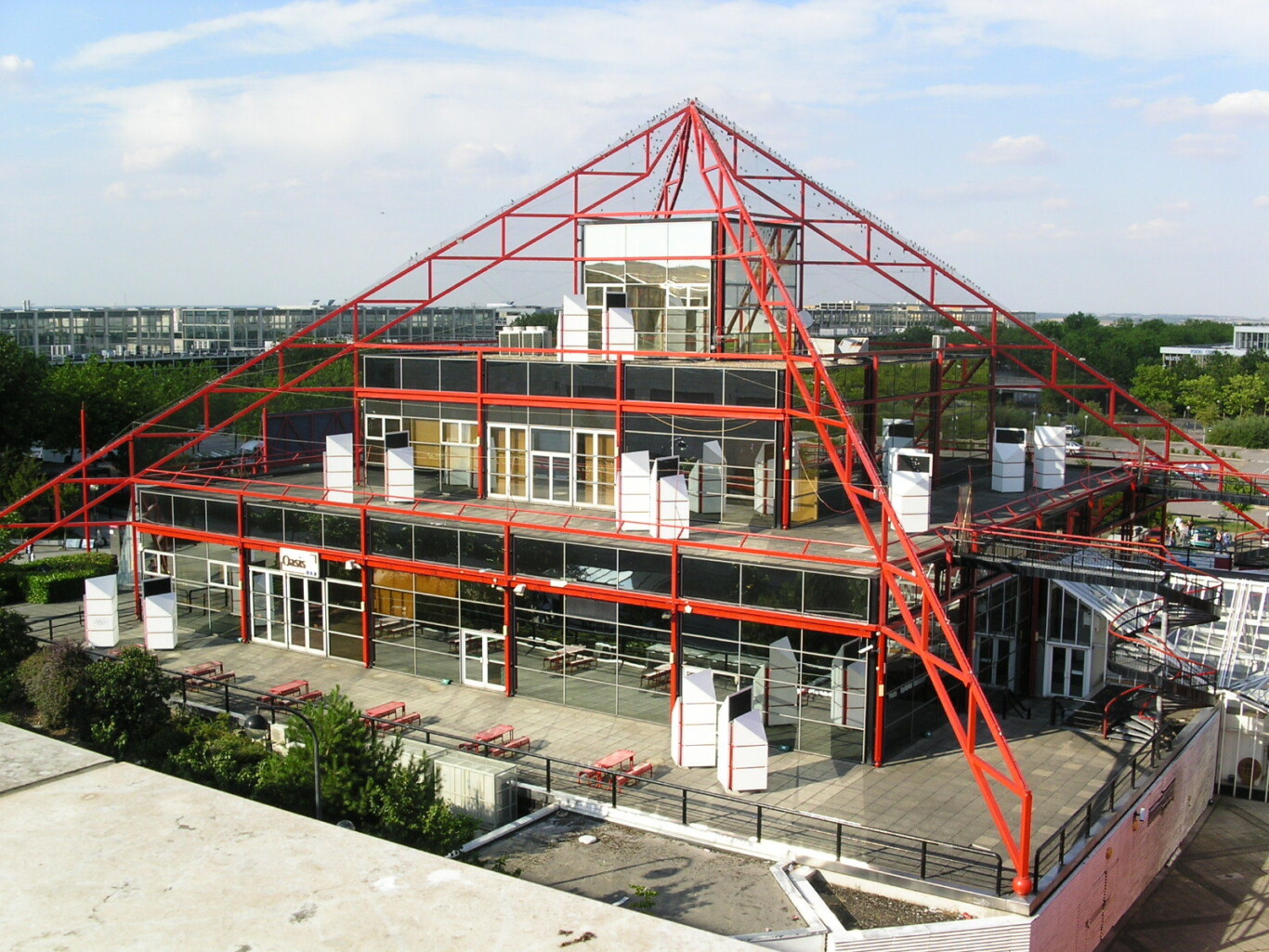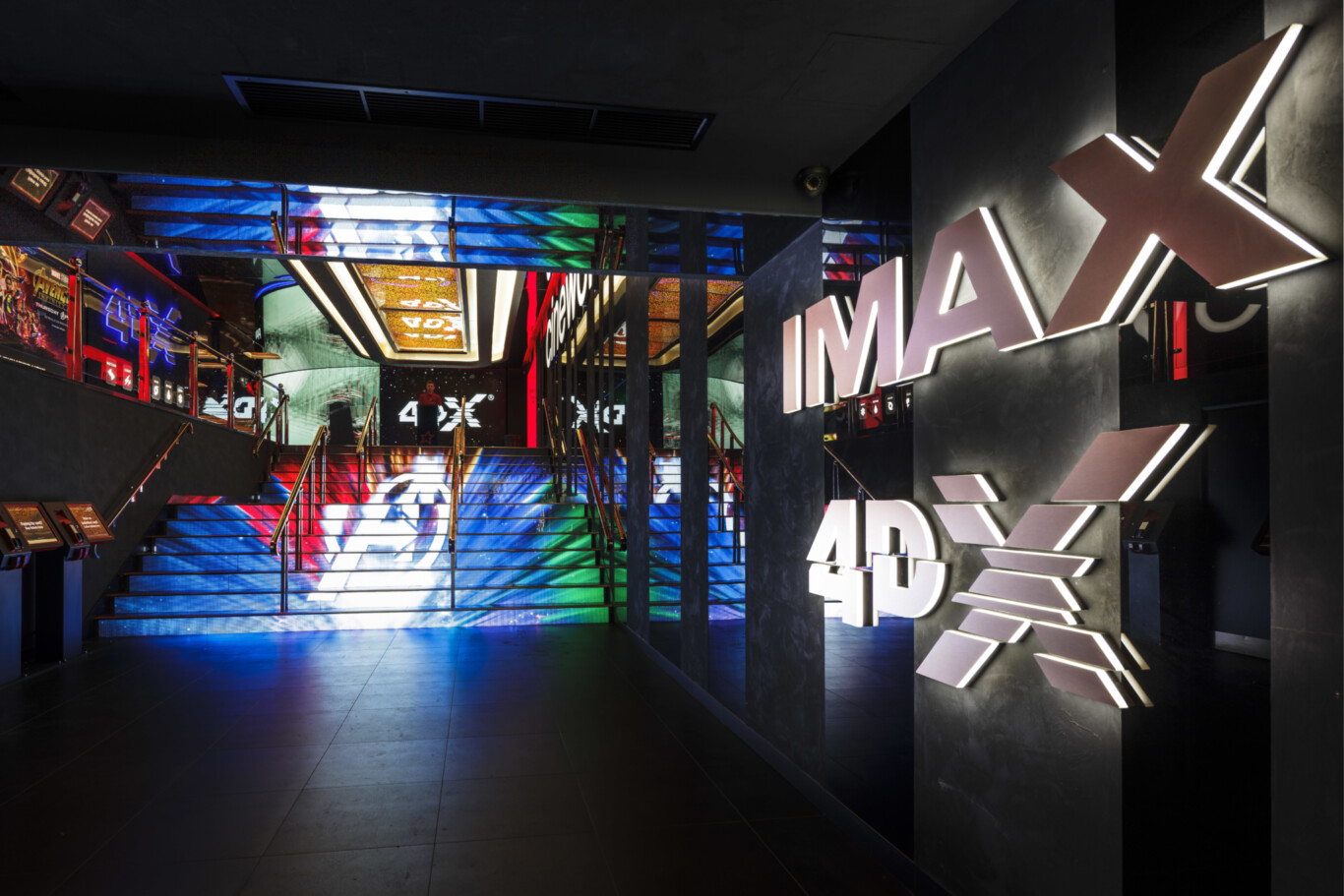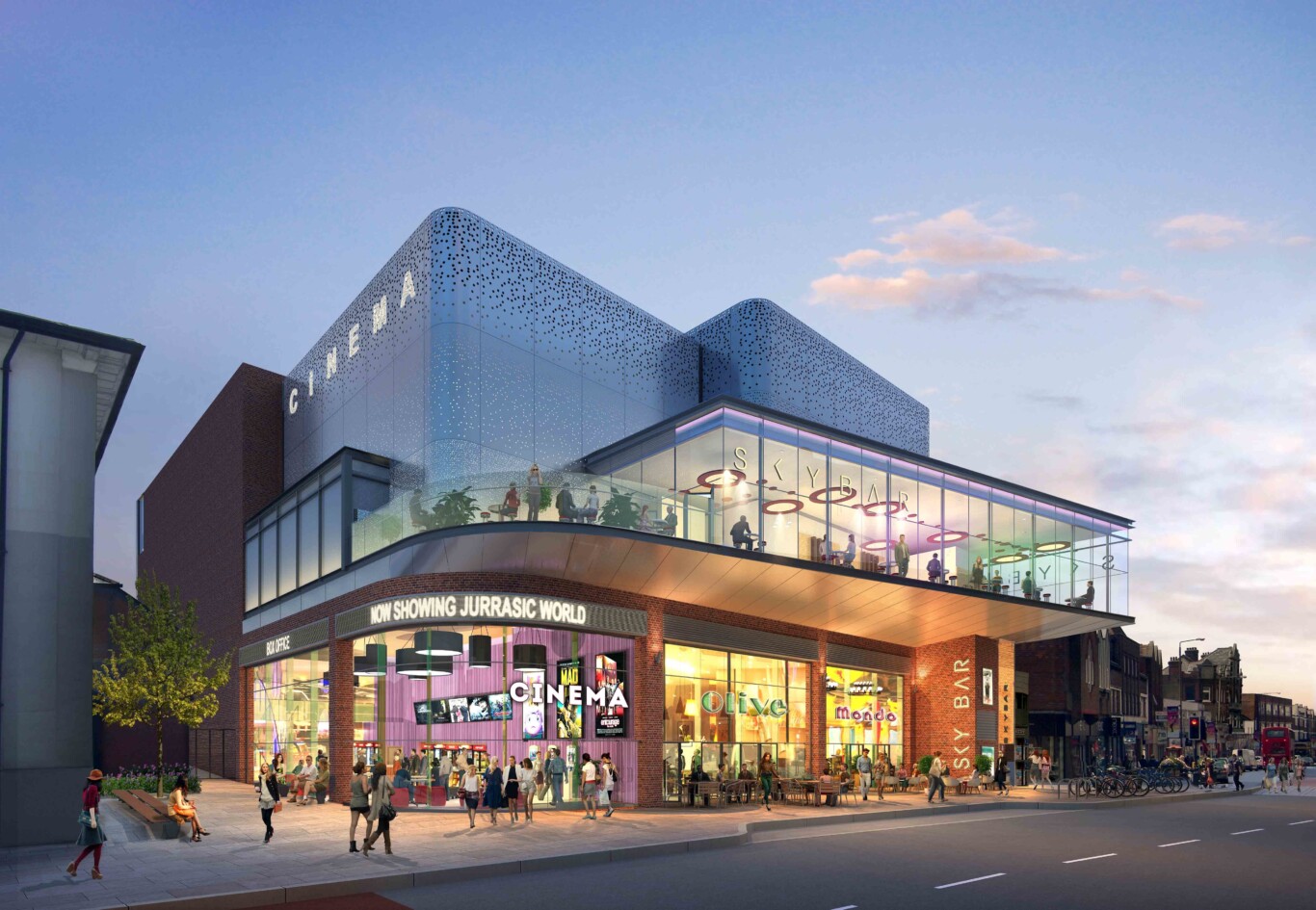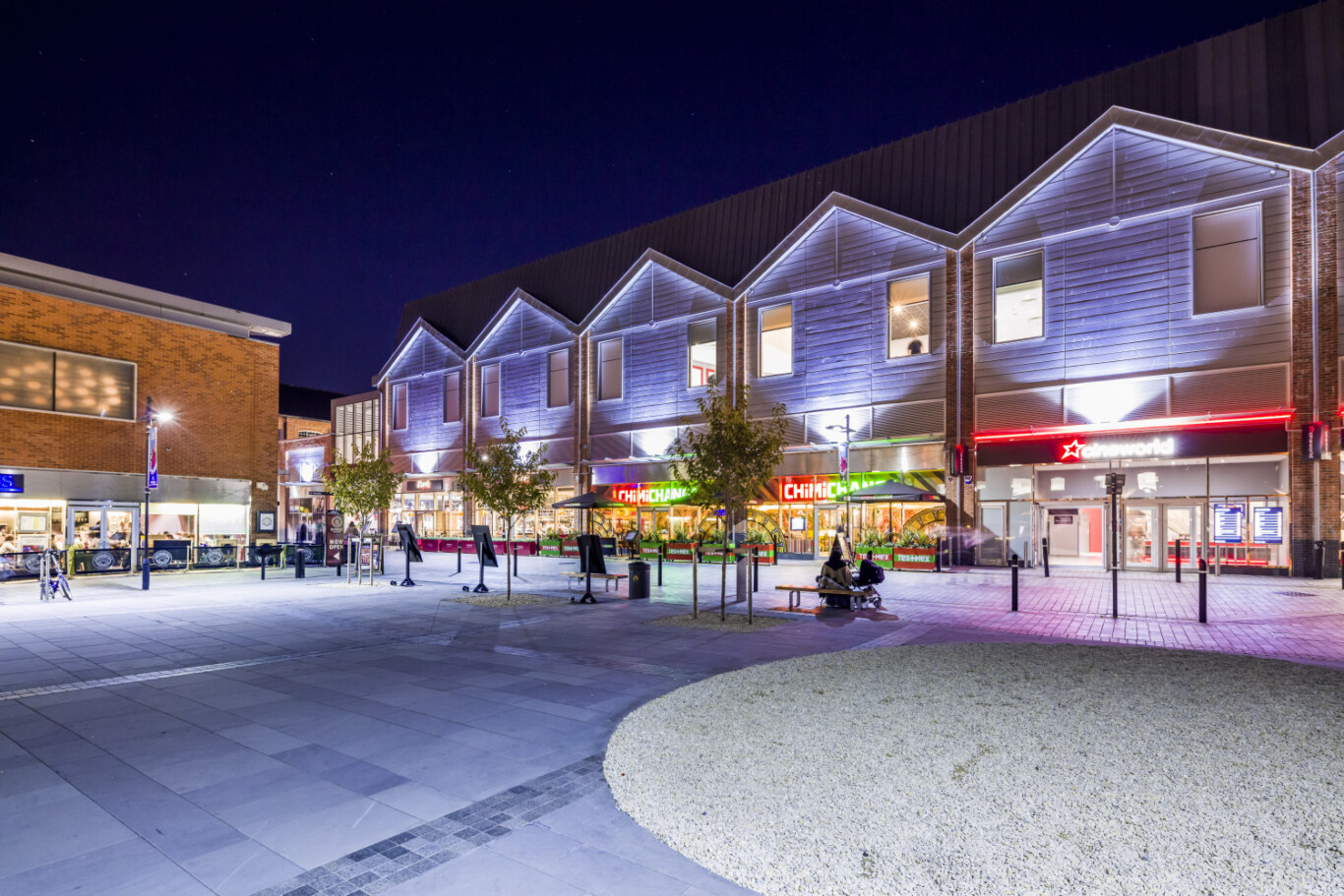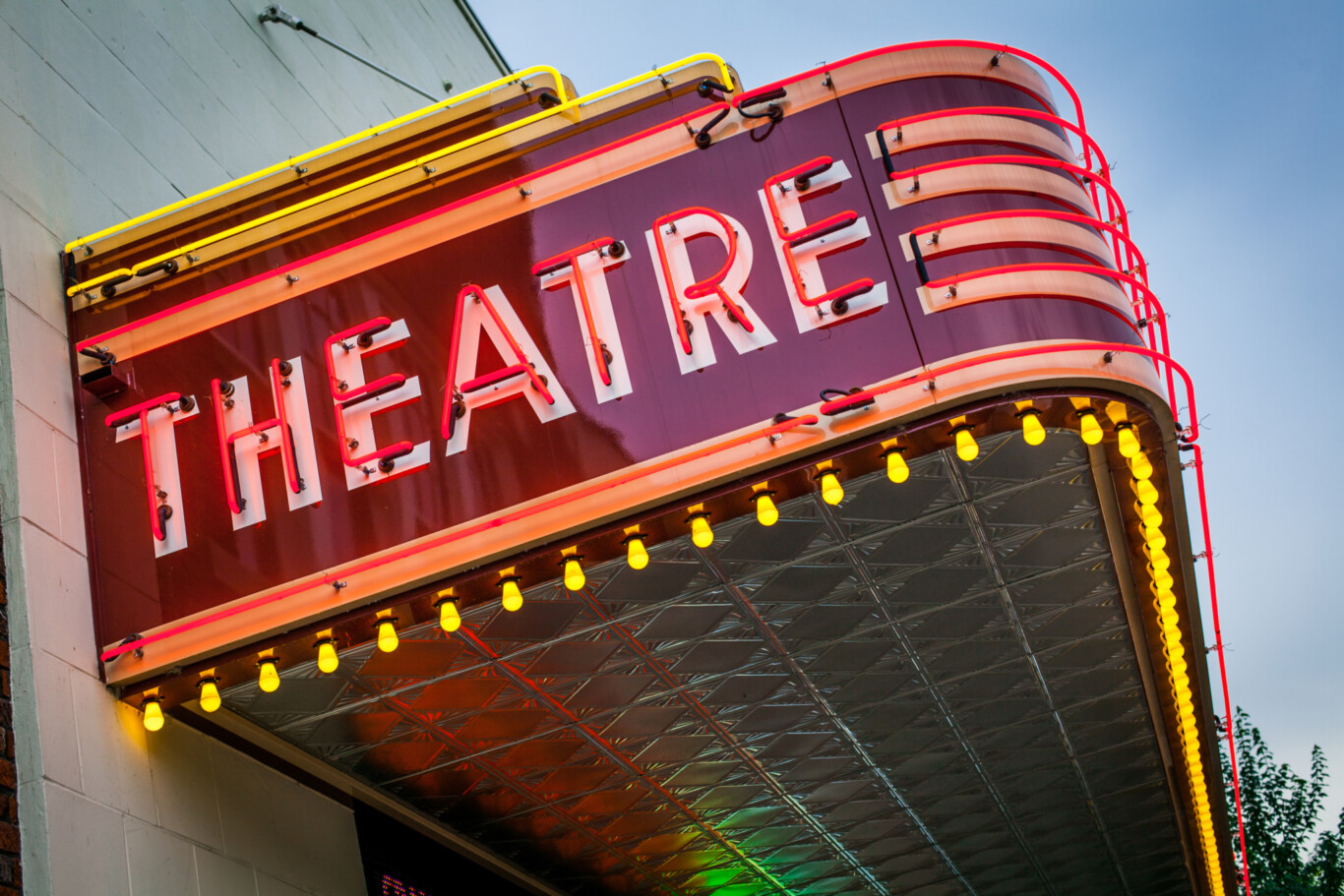
How cinema can save your town – again!
Chapman Taylor has designed and delivered many of the world’s largest and most striking cinema projects. Working for, and with, leading industry names, Leisure Director David Wallace has decades of experience in creating state-of-the-art cinema environments which enhance movie-goers’ experience and maximise value and impact for the cinema developers. In this insight paper, written in 2018, David discusses the remarkable resurgence of moviegoing in popular culture over the last 30 years, arguing that the role of cinemas as key community fixtures has come full circle, with the revival of many town centre venues and the continuing popularity of out-of-town cinema developments.
The 1970s to 1980s saw a lot of cinemas closed or near closure
Scene 1 - The birth in the town centre
To understand cinema and the opportunities ahead for town centres, we must first understand the background of how and why cinema is where it is today.
Cinemas, in their inter-war period heyday, were developed in town centres, animating the evening scene with moving lights, movie premieres and glamour. We have all seen those wonderful black and white photographs of movie stars stepping out of limos onto a red carpet and rushing into the fanciful architecture of the latest cinema, with paparazzi flashing their cameras and adding a heightened level of excitement and glamour to the location. The simple fact was that people loved to visit cinemas to escape their daily routine for a few hours. This added a buzz to the areas adjacent cinema. It was a main contributor to an active town centre, particularly at evening time.
Fast forward to 1970s to 1980s period, the same cinema was likely to be closed or near closure, the fanciful architecture crumbling. For many, it appeared as if the cinema industry was close to failing after too many years of poor investment and the steady adoption of TV and home video as the main sources of entertainment. Movies were now more commonly made in widescreen format, more suitable to television proportions. Clearly, television was regarded as the format that movies had to follow. The demise of cinema seemed imminent.
Scene 2 – Out-of-town breakout
In 1985, a strange new building appeared in Milton Keynes, UK, closely followed by another in Salford. For many these were UFOs landing in desolate locations on the bleak edges of the town. The cinema industry had finally recognised that, to save itself, it had to fight back and invest in its future with vision, faith and many, many dollars. Over the next 15 years, this new building type steadily appeared in more and more out-of-town UK locations. Similar developments followed across Europe.
By 2000, cinema was a thriving business and, for property developers, it was becoming the ideal anchor tenant, offering a secure source of rental income. Cinema companies would commit to 15/20-year leases, often with strong parent company guarantees. This was a significant shift from 1985, when there was little faith in the success of cinema and much of the investment was by the cinema exhibitors themselves. In the early years of cinema development, property developers were not so sure of the longevity of cinemas whereas, by 2000, developers were so confident that cinemas were a solid anchor for their developments that many were prepared to pay for everything, including the seats and popcorn poppers.
However, for many, this success came with its drawbacks. Small, local town centre cinemas were challenged by the big new shiny multiplexes, and many closed as a result. Town centres were losing their night-time heartbeat and, slowly but surely, town centre business began to dwindle as out-of-town developments flourished.
Scene 3 – Return to the town centre
To combat this phenomenon, UK planning laws were changed early in 2000, bringing in a requirement for sequential testing; before an out-of-town development could be considered, it had to be shown that a similar development could not be built in the town centre. Of course, to build in the town centre was often more expensive, and plot sizes, plot ratios, shapes, adjacencies, rights of light etc. all had to be woven into the design, often with complex and conflicting needs. The first such cinema development I can recall was the O2 centre in Finchley, a complex, multi-use, multi-level building secured with a Warner Village cinema. It was also connected to the London Underground network. This building was to prove to be the first of the next generation of leisure developments. Developers were now so confident in the success of cinema that it was worthwhile to build such complex buildings. It is also worth noting that this cinema in Finchley Road was the first in the UK to be fitted with a digital projector, a test bed for the next seismic change that would eventually take cinema to its next level of development.
For the next ten years, out-of-town development continued at a slower pace. Meanwhile, a new type of development was happening and becoming more common in town centres.
Scene 4 – Digital, market segmentation and the rebirth of cinema
Digital cinema was the centre of much discussion and experimentation during the 2000s, but it only really took off in 2009 with the release of the movie Avatar. The director, James Cameron, pushed for it to be shown via digital projection. Cinemas across the world scrambled to install their own digital projectors for the movie’s release. Now, because of the spike in demand, the prices of digital projectors dropped, options to finance the investment were agreed and many manufacturers developed their own systems. The change from 35mm film to digital happened incredibly quickly and, within a matter of a few years, almost all cinemas had converted to digital.
By 2010, cinema had become an integral part of the UK leisure habit. Just prior to the birth of the multiplex in 1985, UK cinema admissions were at an all-time low of 54 million, a massive fall from the all-time high in 1946 of 1.64 billion. By 2010, when the digital transformation was well underway, UK admissions had grown to 170 million.
With this increased popularity, it was inevitable that market segmentation would occur. Some people were happy to go to the big, bright multiplex with buckets of popcorn and soda on tap. Others, however, wanted something more intimate and cosy, perhaps showing specialist arthouse movies with a cappuccino or a glass of wine - perhaps something that reminded them of that charming old cinema in the town centre that was struggling to survive against the voracious multiplex.
This segmentation and the desire for something different, coupled with the adoption of digital projection, gave birth to a new type of cinema. Previously, with 35mm film use in multiplexes, the auditoria were arranged in a strict geometry so that one reel of film could, in theory, be shown on all the other screens almost simultaneously. Elaborate mechanisms were developed that allowed the same piece of film to rewind and whizz overhead, around corners and, sometimes, through floors to serve each projector. This was the key technology that made multiplex cinema possible and profitable for the cinema exhibition companies.
Movies now came as a digital file and could be controlled from a laptop or a central location in head office. This allowed the auditoria to be arranged in many different ways, allowing them to be designed and built in more complex locations. One of the first leading examples opened in 2013 – Curzon’s Victoria Cinema in central London. The site was challenging, comprising space left over in the basement from the development of the multi-storey office tower above. No other operator was interested in trying to fit in a new cinema in the tight basement, which was full of large columns at close centres and offered limited access. Curzon took the bold move and managed to shoehorn five small, luxurious cinemas into the basement complete with a beautiful entrance at street level that can easily be mistaken for a very nice bar or café. Large projected images, and a cool digital display imitating an old readograph cinema sign, bring life and glamour to the street at night-time.
This was an instant success. It allowed the developer to secure similarly cool F&B tenants nearby, bringing life back to the city centre. Others followed – for example, Everyman Cinemas and Picturehouses. The small, boutique cinema format is perhaps the fastest growing cinema sector in the UK.
Cinema had indeed come full circle, bringing life back to the town centre, along with a touch of style and glamour.
Scene 5 – Today and the near future
Today, town centre cinema is thriving. Boutique, small-scale cinemas are popping up everywhere. Curzon, Everyman, and small independents are all eager to take space in the right town centre locations. In a very appropriate way, some of the old cinemas of a bygone period are being brought back to life by the resurgence of cinema.
Everyman Bristol is in a 1920s Grade II-listed building, and Everyman York has recently opened in a former art deco Odeon cinema – another grade II-listed building, now used as a four-screen cinema, with many of the original art deco features renovated in full.
We are now seeing bespoke, small-scale cinemas appearing as a key part of the planning strategies for town centres. Eltham Cinema is now under construction – a very stylish, multi-level Vue cinema complete with a sky-bar.
To further illustrate how successful cinema has become, and how cyclical the development of cinema is, a 1913, Category A-listed cinema has been brought back to life by Picturehouse in the small Scottish town of Campbeltown. Anyone who has been to Campbeltown on a wet and miserable Sunday afternoon prior to the reopening of the cinema will fully appreciate the positive effect that the cinema has brought to the town. It has been transformational.
And it is not only the small boutique cinema that is bringing about positive change. The ‘traditional’ multiplex (how quickly the ‘new’ of 1990s has become the ‘traditional’ of today!) is showing how cinema can bring life back to a struggling out-of-town development. The 14-screen Cineworld at Silverburn, Glasgow, has saved a large shopping centre from further decline. The cinema opened in 2015 and increased footfall by over 20% almost immediately. Its success has also brought in new F&B offers and, together, they offer a clear example of the positive effect the right combination of cinema and multiple quality restaurants / cafés can make in combating the threats that retailers now face from online shopping.
Gloucester Quays is another good example – a typical retail development from the 1990s with a large shopping centre on one side of the main road and a typical cinema with restaurant units on the other. That planning made sense in the 1990s, allowing the cinema to stay open late after the shopping centre was closed in the early evening. One did not have to stay open for the other. However, when the shopping centre began to suffer from reduced footfall, the developer’s team made the smart decision to move the cinema into the shopping centre. They then developed the former cinema site for another purpose. It was an immediate success, and now Gloucester Quays is a hugely busy retail development.
The Light Cinema in Stockport has activated a part of the town that was dying, and the way that the operator and the town council collaborated to develop the site is an example that other town councils should follow. It opened earlier this year, and has surpassed all expectations for both the operator and the council.
For the near future, cinema will continue to contribute to and enliven whatever location it is in. Whether in a town centre or in an out-of-town retail development, people love to go to the cinema.
The industry is investing heavily in new technologies, such as immersive sound systems, laser projection, super-reflective screens, massive contrast ratios, the whitest of whites and the blackest of blacks. Seats are reclining, sometimes custom-made and leg room is increasing. Cinema operators are developing their own restaurant and café brands. Social media is allowing likeminded aficionados of particular movies to come together in numbers to request that the cinema show those movies.
The same creativity is also happening in other parts of the world. The Dubai Mall recently opened the ‘world’s most luxurious cinema’. In Dubai’s Mall of Emirates cinema, you can even have your meal prepared by the Michelin star-rated chef Gary Rhodes.
The decisions in the mid-1980s by the major movie studios to invest heavily in cinema development is now paying dividends for those studios. No longer are the summer and Christmas holidays the only time to see the best movies of the year. Great movies are being released every month, with record levels of investment, encouraging more people to go back to the cinema and keeping the wheel turning.
Perhaps the best and most obvious example of how cinema has come full circle since its low point in 1984 is how the shape of televisions are now inspired by cinema. Large cinemascope ratio TVs are now a must-have item for most households. TVs are now following cinema.
What an exciting cycle cinema is!
